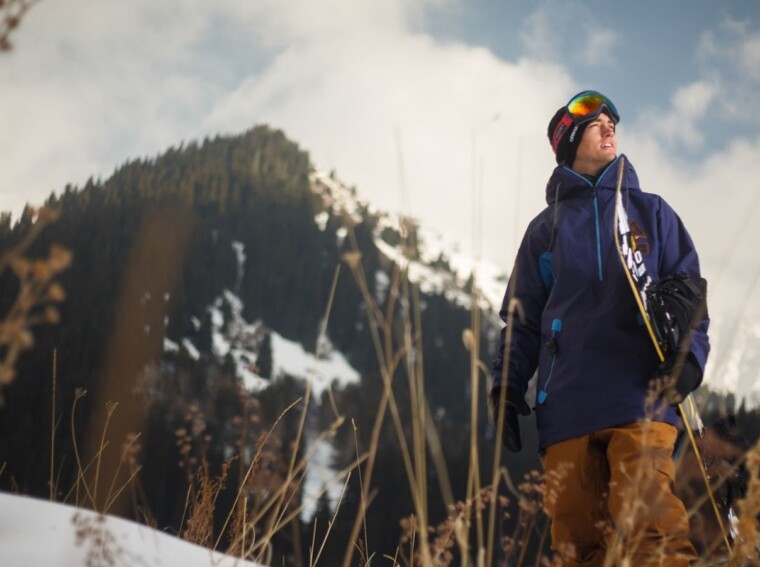Choosing the right winter jacket can make a huge difference in your comfort and warmth during the cold season. Here are some essential features to consider when choosing a winter jacket:
Insulation: Look for jackets with high-quality insulation, such as down or synthetic materials, to keep you warm in even the most frigid temperatures.
Waterproofing: A waterproof or water-resistant jacket is ideal for snowy and wet conditions. Water-resistant jackets can withstand light snow and rain but won’t keep you dry in heavy downpours or prolonged exposure to water.
Breathability: A jacket with features like vents or breathable materials can prevent sweating and moisture build-up, keeping you dry and comfortable throughout the day.
Fit: A well-fitting jacket should be comfortable, not too tight or loose, and allow for movement and layering underneath.
Durability: Choose a jacket made of sturdy and reliable materials that can withstand wear and tear, especially if you plan on using it for outdoor activities.
Considering these essential features, you can choose the winter jacket that best suits your needs and keeps you warm and comfortable throughout the season.
Warmth
When selecting a winter jacket, warmth should be priority number one. You should consider the types of fabrics and insulation used in the jacket, as this will determine how warm or cold you will be. Look for materials such as goose down and wool, which are warm and lightweight, and check the fill power of down jackets.
It is also a good idea to pay attention to the weight and thickness of the jacket and the fill weight.
Read on for more tips on what to look for when buying a winter jacket.
Types of insulation materials
Regarding insulation materials for your winter jacket, there are a few types to choose from, each with unique features and benefits.
Here are the most common types of insulation materials:
1. Down: Down insulation is made from the soft under feathers of ducks and geese. It’s lightweight, breathable, and warm in cold weather. However, it tends to lose its insulating properties when wet.
2. Synthetic: Synthetic insulation is made from polyester fibers designed to mimic the insulating properties of down. This type of insulation is often more affordable than down and can retain its warmth even when wet.
3. Wool: Wool is a natural insulator that can provide warmth even when wet. It’s also naturally breathable and odor-resistant. However, it may not be as lightweight as other insulation types.
4. Fleece: Fleece is a synthetic insulation that is soft and comfortable. It’s breathable and can provide warmth in moderate cold weather, but may not be as effective in extreme cold.
When choosing a winter jacket, consider the weather conditions you’ll be in, your activity level, and your budget to determine which insulation type is best for you.
Factors that affect warmth and comfort
When choosing a winter jacket, various factors affect warmth and comfort, including the jacket’s insulation, material, fit, and additional features.
Insulation: The type and amount of insulation used can significantly impact warmth. Down insulation is the warmest but can lose effectiveness when wet, while synthetic insulation is reliable.
Material: The outer material of the jacket affects insulation and breathability. Gore-Tex and other waterproof materials offer protection against snow and rainfall while allowing sweat to escape.
Fit: A properly fitting jacket should be close to the body but allow for layering. A jacket that is too tight or too loose can reduce warmth and comfort.
Additional features: Hood, cuffs, and pockets are essential features that add warmth and comfort. Look for jackets with high-quality hardware, multiple pockets, and adjustable cuffs and hoods to keep cold air out.
Considering these factors when selecting a winter jacket can help ensure maximum warmth and comfort.
Pro tip: Before purchasing, consider your daily activities and the expected winter weather conditions in your area to determine the type of jacket most suitable for your needs.
Choosing the right level of warmth for your needs
When selecting the right winter jacket, there are several features to consider, including warmth level, which is determined by the type of insulation used.
Here are some tips for choosing the right level of warmth for your needs:
1. Determine the Temperature Range: Consider the coldest temperature you will likely face and look for jackets with insulation designed to handle those temperatures.
2. Check the Insulation Type: Down insulation is the warmest option, but synthetic insulation is better for wet conditions.
3. Look for Quality Construction: Check for features like a draft flap, adjustable cuffs, and a hood to keep the warmth and cold air out.
Ultimately, the warmth you need in a winter jacket will depend on your needs and the conditions you expect to face. So take the time to consider your options and choose a jacket that will provide the warmth and protection you require.
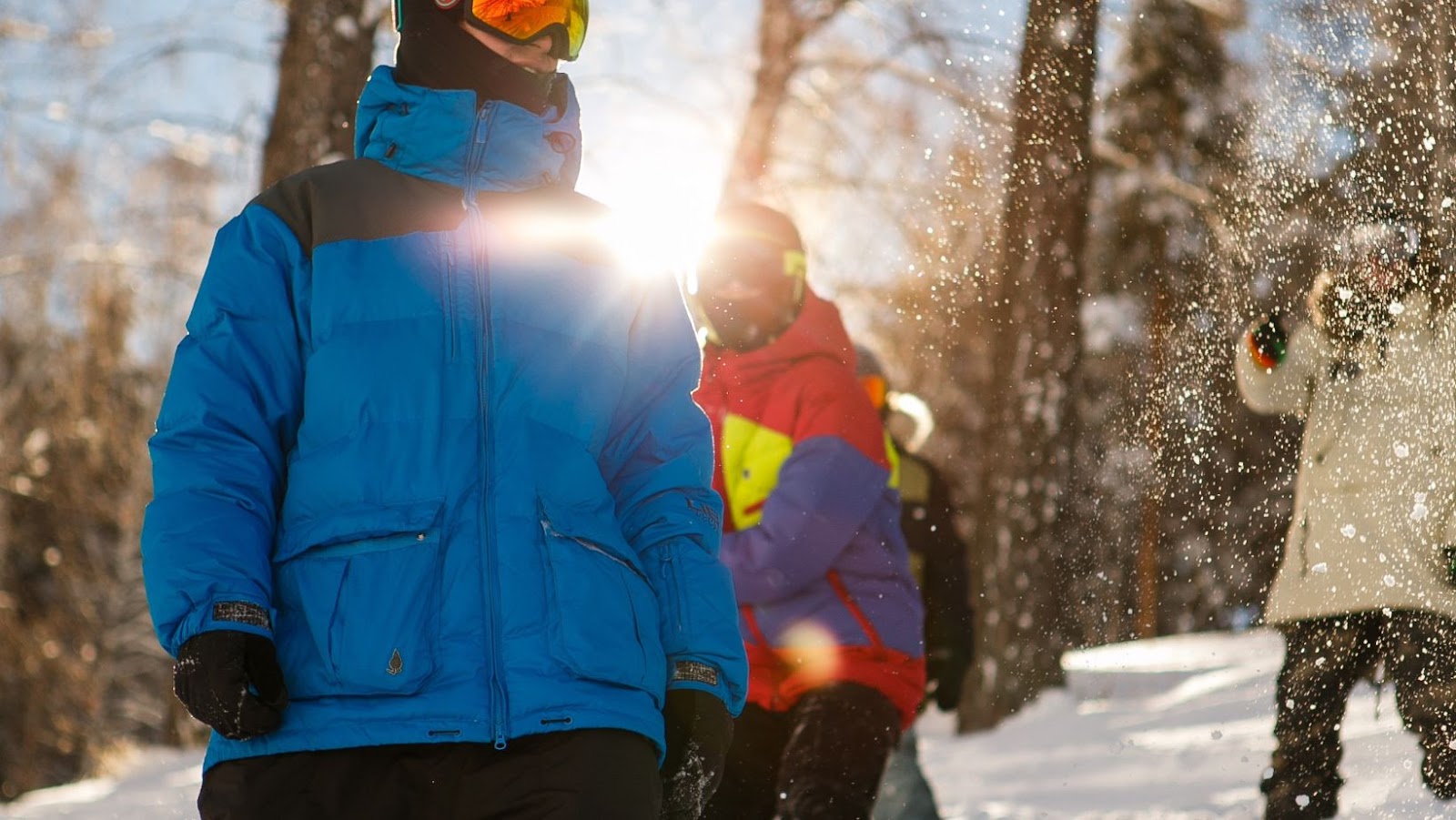
Weather Resistance
When shopping for a winter jacket, it is important to consider the weather resistance of the jacket. This includes factors such as waterproofing, wind resistance, and breathability. In addition, the type of fabric used and the jacket’s insulation play a major role in determining how well the jacket will stand up to different weather conditions.
Let’s look at how these features influence your choice of winter jacket.
Waterproofing materials and technologies
When looking for a winter jacket, it’s essential to consider the weather resistance features to ensure that it can protect you from the elements. In addition, waterproofing materials and technologies are crucial factors to consider.
Here are some of the popular ones to look out for:
Gore-Tex: Gore-Tex is a popular waterproof membrane technology that is breathable and durable. This technology is widely used in winter jackets for its impressive weather-resistant properties.
DWR Coating: DWR (Durable Water Repellent) coating is popular for waterproofing jackets. It is a chemical coating that repels water while allowing the fabric to remain breathable.
Synthetic Insulation: Synthetic Insulation is another essential feature to look out for when choosing a winter jacket. It’s hydrophobic, repels water and remains warm, even when wet.
Sealed Seams: Sealed seams prevent water from seeping through the seams of your jacket. They are usually taped or sealed with a waterproof material to ensure that you stay dry.
When purchasing a winter jacket, look for those that use these waterproofing materials and technologies to ensure you stay warm and dry during the colder months.
Windproofing and breathability features
When looking for a winter jacket, it is important to consider windproofing and breathability features to ensure maximum weather resistance and comfort.
Here are some key features to look for when choosing a winter jacket:
Windproofing: A jacket with a windproof outer layer can prevent cold air from penetrating the jacket and robbing you of heat. Look for jackets with windproofing features such as a tightly-woven or laminated outer fabric, adjustable cuffs, and neck collars that can be cinched tight.
Breathability: A breathable jacket will allow for moisture to evaporate from your body, reducing sweat and keeping you comfortable. To improve airflow, look for jackets with breathable materials such as Gore-Tex or eVent fabrics, mesh lining, and underarm vents.
You can stay warm and comfortable even in the harshest winter conditions by looking for a jacket with windproofing and breathability features.
Pro tip: Try the jacket on before purchasing to ensure the fit allows for proper layering and movement.
Hood and collar designs for added protection
One key feature when choosing a winter jacket is the hood and collar designs for added protection against harsh weather conditions.
A hooded jacket with a fur or faux fur trim can provide extra warmth and protection for your face, ears, and head. Additionally, a high collar can help to block out strong winds and snow, safeguarding your neck and chin from the cold.
Some popular hood and collar designs for winter jackets include:
- Removable hoods
- Detachable fur trims
- Drawstring hoods/collars
- Fleece-lined collars
When choosing the most appropriate hood and collar designs for your winter jacket, consider comfort, durability, and specific winter weather needs.
Pro tip: Opt for hoods and collars made of high-quality materials to ensure maximum warmth and protection.
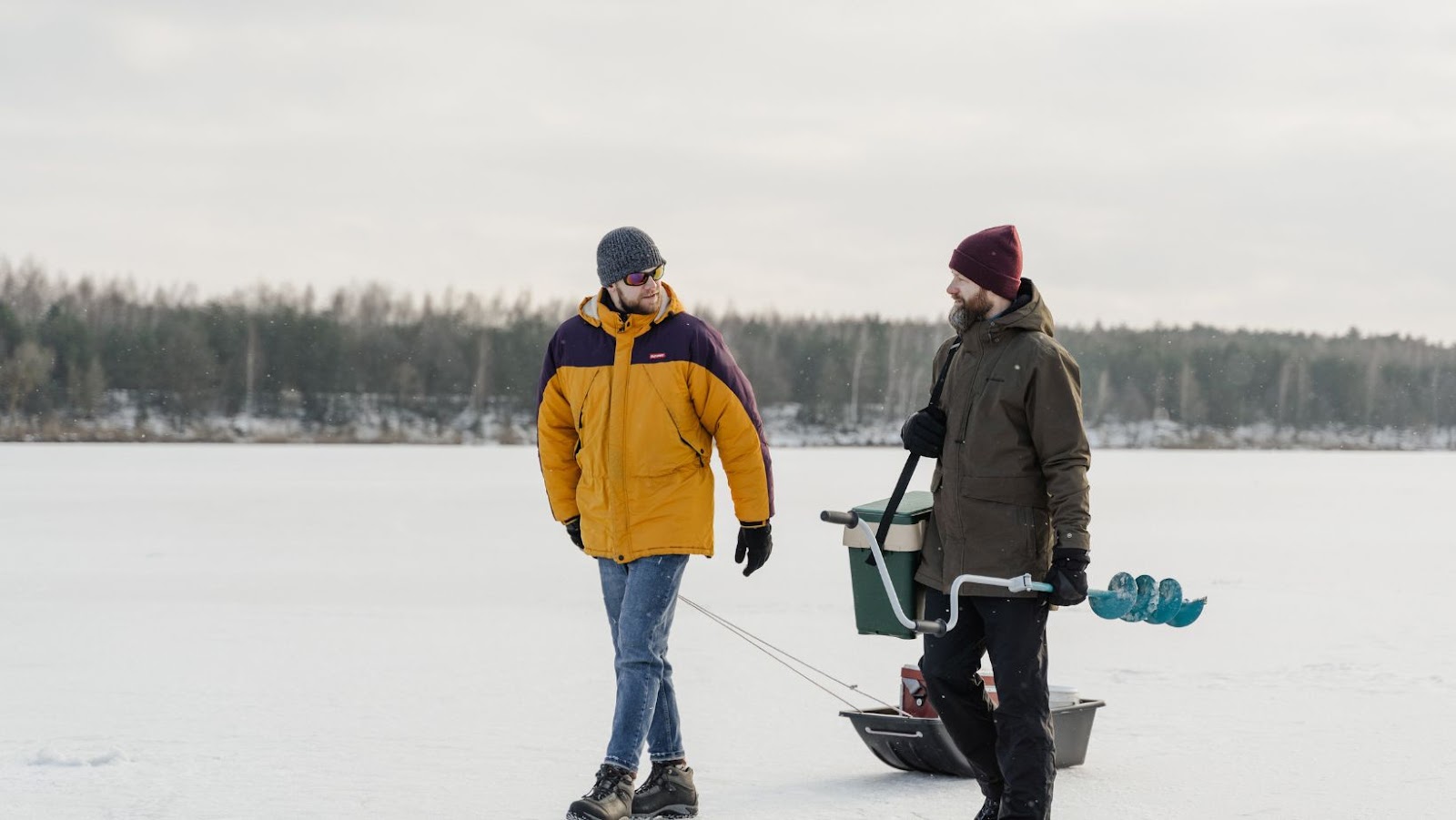
Durability
When shopping for a winter jacket, durability should be top of mind. Considering the jacket’s material is important, as some are better suited for certain conditions than others. Additionally, the quality of construction and stitching should be considered when choosing a winter jacket.
Knowing the properties of each type of material and the quality of construction can help you decide on the best jacket for your winter needs.
Materials used for the shell and lining
When choosing a winter jacket, it’s important to consider the materials used for the shell and lining to ensure durability and protection from the cold weather.
The shell is the jacket’s outer layer and is usually made of polyester or nylon. These materials are lightweight, durable, and can withstand harsh weather conditions. Gore-Tex is another popular shell material that is waterproof and breathable, making it ideal for wet and cold climates.
The lining is the inner layer of the jacket and is usually made of polyester fleece, natural wool, or synthetic materials like Thinsulate. These soft, insulating materials help retain warmth inside the jacket.
Choosing a jacket with a high-quality shell and lining material is important to ensure longevity and warmth during the winter season.
Reinforcements for high-stress areas
One key feature to consider when choosing a winter jacket is reinforcements for high-stress areas. These areas on the jacket are more likely to experience wear and tear, and thus require added durability.
Some common high-stress areas to look for reinforcements include:
Shoulders: Look for jackets with reinforced stitching or additional padding on the shoulders to withstand backpack straps or heavy bags.
Elbows: Reinforced patches on the elbows can prevent holes or fraying from constant friction.
Zippers: Choose jackets with sturdy, heavy-duty zippers to prevent breakage or jamming.
Pockets: Reinforced pockets can withstand the weight of heavy items or constant use without fraying or tearing.
By choosing a winter jacket with reinforcements in high-stress areas, you can ensure that your jacket will last longer and provide better protection from the cold. Remember to consider insulation, material, and fit when selecting your winter jacket.
Pro tip: Check the care instructions for your jacket to ensure you properly wash and store it for maximum lifespan.
Quality of stitching and construction
When choosing a winter jacket, it is important to consider the quality of stitching and construction to ensure that it can withstand the elements and daily wear and tear.
Here are some features to consider:
Double-stitched seams: Strong and durable seams prevent tearing and fraying over time. Double-stitched seams provide extra reinforcement and are less likely to unravel.
Quality materials: Look for winter jackets made from high-quality materials such as down, wool, or synthetic water-resistant and windproof materials. These materials are designed to withstand harsh conditions and maintain shape and appearance.
Reinforced stress points: High-stress areas such as elbows and shoulders should feature additional stitching or reinforced fabric to prevent tearing. These reinforcements will increase the durability of the jacket and prolong its life.
Heavy-duty zippers: Zippers should be sturdy and made from rust-resistant metal or durable plastic. Heavy-duty zippers will prevent the jacket from opening or getting stuck, ensuring maximum protection against the cold.
By paying attention to the quality of stitching and construction, you can rest easy knowing that your winter jacket will last for many winters.
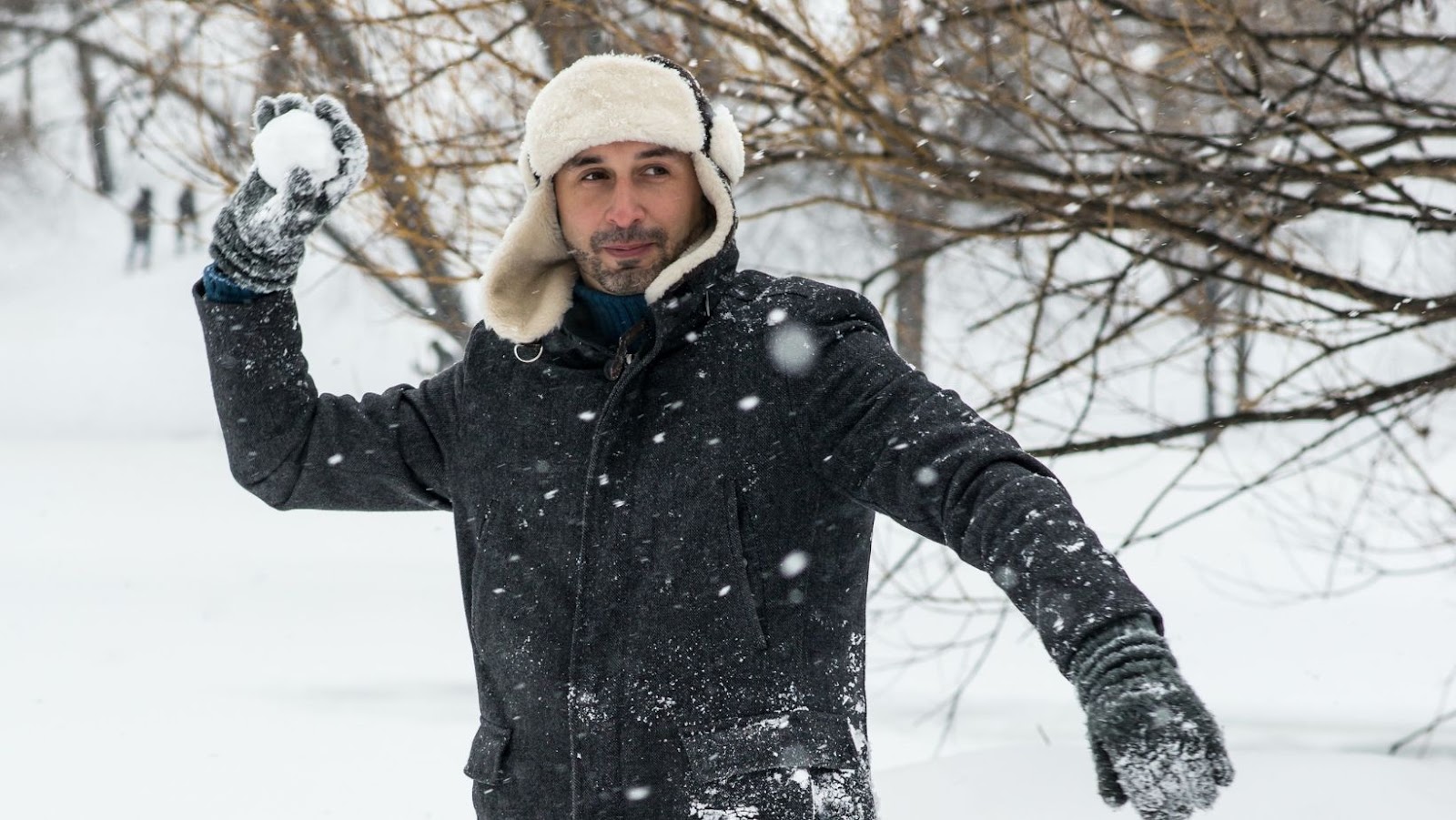
Thesparkshop.in:product/best-winter-jackets-for-men-sports-look-special-m-l-size-only
When searching for a winter jacket, consider comfort and fit. Your winter jacket should be comfortable – you don’t want a too tight or loose jacket. The fit should also be kept in mind when selecting a winter jacket. You should make sure it’s the right size and length.
The jacket should also provide enough space to move freely and be fitted close to the body.
Choosing the right size and style
When selecting a winter jacket, choosing the right size and style is crucial for optimal comfort and fit. In addition to these factors, there are essential features to consider when selecting.
Size and Style: Choosing a winter coat that fits your body type is essential, keeping in mind that layers may be worn underneath for added warmth. The jacket style should match your lifestyle and the activities you will be engaging in.
Comfort: A comfortable winter jacket is crucial, so consider the weight and flexibility of the fabric and the convenience of features like pockets and zippers.
Fit: A good jacket should fit well, not too tight or loose. Pay attention to the fit of the shoulders, sleeves, and length of the jacket, ensuring you have enough room to move comfortably.
Other features to consider include the type of insulation, breathability, water resistance, and jacket durability. Taking these features into account will enable you to find the perfect winter jacket to suit your needs and activities while keeping you warm and comfortable.
Adjustments and features for custom fit
Adjustments and features for custom fit are important considerations when choosing a winter jacket for ultimate comfort and warmth.
Features to consider include:
- Adjustable cuffs and hems: You can customize the jacket’s fit and seal out cold air.
- Articulated elbows enhance ease of movement and comfort, especially during activities like skiing or snowshoeing.
- Hood and collar: Look for a high collar to protect your neck from the cold, and a hood that can be adjusted to fit your head comfortably.
- Length: Consider the length of the jacket to ensure it covers your lower back and keeps you warm.
- Zippers and pockets: High-quality zippers should be easy to operate with gloves on and well-placed and insulated pockets.
Don’t compromise on comfort and warmth, and take the time to choose a jacket with the features that matter most to you.
Pro tip: When choosing a winter jacket, it’s always better to go a size up to accommodate thick layers underneath without sacrificing comfort.
Interior design for added comfort
Creating an interior design plan with added comfort in mind can transform your living space into a cozy retreat. Here are a few tips to get started:
1. Incorporate soft textures: Add throw pillows, plush blankets, and area rugs made with soft materials like faux fur, chenille, or velvet to create a warm and inviting feel.
2. Choose warm colors: Warm colors like reds, yellows, and oranges can create a cozy atmosphere. Consider adding these colors through accent walls, artwork, or decorative accessories.
3. Consider the lighting: To create a warm and cozy feeling, use soft lighting such as table lamps and floor lamps, which produce a warm glow. Dimmer switches can also help in controlling the lighting as required.
These steps can transform any space into a comfortable and welcoming retreat you’ll enjoy coming home to.
Pro tip: When choosing a winter jacket, look for good insulation, durable and waterproof outer shell, adjustable hood closures, storm flaps to keep out the wind, and adjustable cuffs for added warmth.
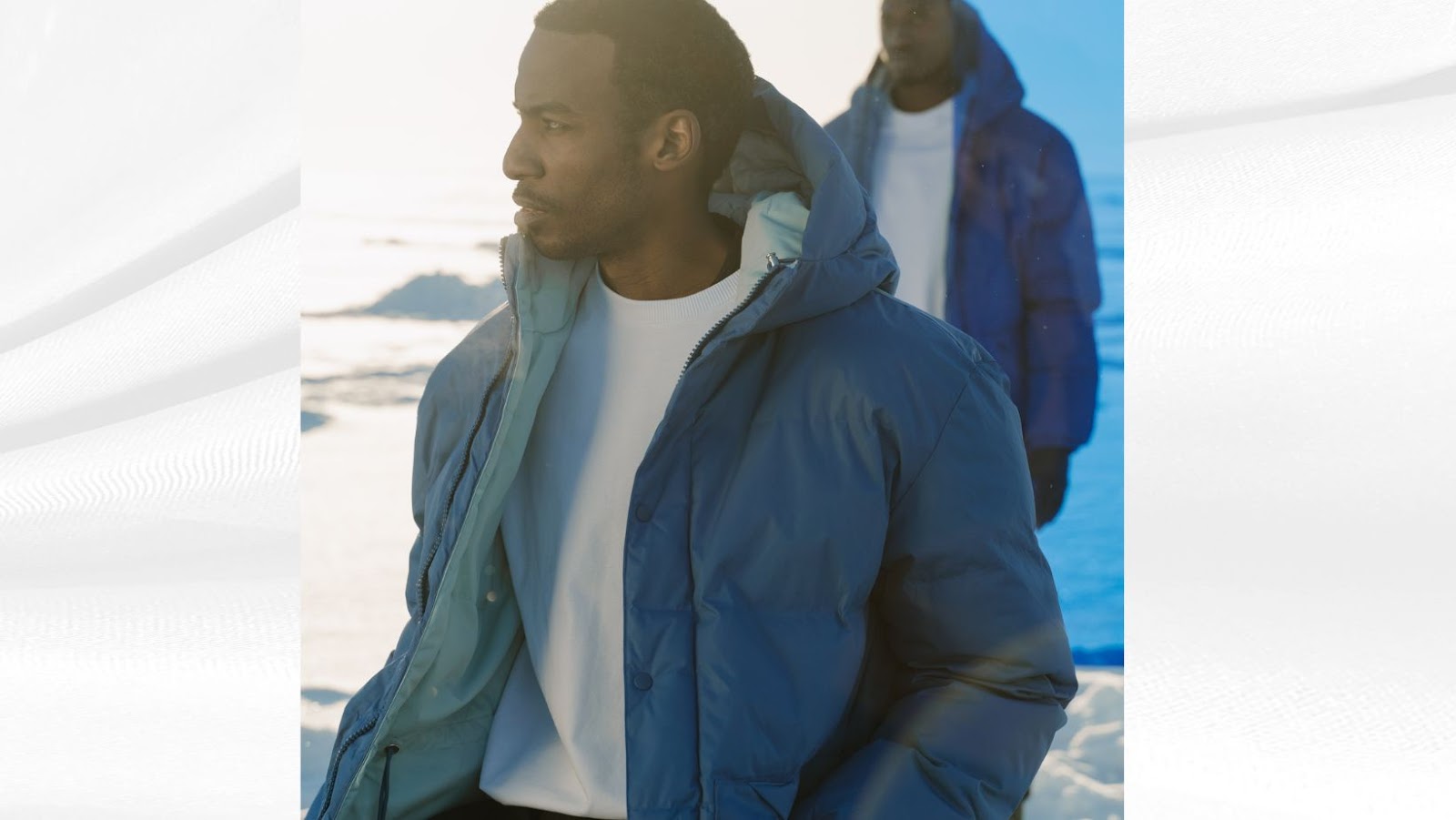
Style and Design
One of the key features to consider when choosing a winter jacket is the style and design. It is important to pick a jacket that suits your needs and is comfortable wearing. Look for zipper pockets, an adjustable hood, and front pockets that make the jacket easier to wear and comfortable.
Do your research and consider the features carefully when choosing a winter jacket.
Choosing a style that fits your personal preferences
When choosing a winter jacket, it’s important to consider your personal preferences and choose a style that fits them. Also, keep in mind the features that are essential to your lifestyle and climate conditions.
Here are some key factors to consider:
1. Insulation: Choose between down, synthetic, or a combination of both, depending on your budget and warmth requirements. Down is lightweight and compressible, while synthetic is more affordable and dries faster.
2. Length: A longer jacket will offer more warmth and coverage, while a shorter jacket is more versatile and fashionable.
3. Hood: A hooded jacket will provide additional warmth and protection from the elements.
4. Pockets: Consider the number and location of pockets based on your needs for storage and convenience.
5. Style: Choose a style that suits your taste and complements your wardrobe. Options include parkas, puffers, and wool coats.
Considering these factors, you can find a winter jacket that fits your style and keeps you warm and comfortable throughout the season.
Trending designs and colors
Winter jackets are necessary to keep us warm and comfortable during colder months, and choosing one with the right features and design that best fits your needs is crucial. Here are the trending designs and colors to consider for your winter jacket:
1. Earthy, neutral colors: Light browns, beige or khaki, deep greys, and rich browns are popular colors that coexist with a winter aesthetic.
2. Puffer jackets with graphic prints: Puffer jackets with funky and colorful graphic patterns are trending and a perfect statement piece to add to your winter wardrobe.
3. Teddy Coats: Teddy coats or faux fur coats are a classic, stylish look that provide warmth and comfort.
When selecting your winter jacket, consider important features like insulation, breathability, water resistance, and style. Pro tip: Layering is also an effective method to increase warmth, so choose a jacket that can be worn with layers underneath.
Brand variations and features
Choosing a winter jacket can be daunting, given the sheer number of brand variations and features available in the market. Here are some key features to consider when selecting the winter jacket best tailored to your needs.
Down vs. Synthetic Insulation: Down insulation provides superior warmth but can be expensive and lose insulation properties when wet. Synthetic insulation is more affordable and retains warmth when wet, but is not as warm as down.
Waterproof vs. Water-Resistant: Waterproof jackets are best suited for heavy rain, whereas water-resistant jackets can withstand light rain and snow.
Fit and Style: Choose a jacket that fits properly and is comfortable. Jacket styles range from classic to modern, with fur-lined hoods and multiple pockets.
Moisture-wicking and Breathability: A moisture-wicking and breathable jacket will keep sweat away from your skin and help regulate your body temperature.
Durability: A winter jacket is a significant investment, so look for one made from durable materials with reinforced stitching and zippers.
Considering these features, you can select a winter jacket that best meets your needs, keeping you warm, comfortable, and stylish all winter.
